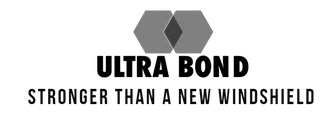UNITED STATES DISTRICT COURT
SOUTHERN DISTRICT OF OHIO
EASTERN DIVISION
RICHARD CAMPFIELD,
et al. Case No. 2:15-cv-2733
Plaintiffs Judge Michael H. Watson
Magistrate Judge Chelsey M. Vascura
v.
SAFELITE GROUP, INC.,
et al.
Defendants
PLAINTIFFS’ MEMORANDUM IN SUPPORT OF PARTIAL MOTION FOR
SUMMARY JUDGMENT ON THEIR LANHAM ACT CLAIM AND MOTION FOR
SUMMARY JUDGMENT AS TO SAFELITE’S COUNTERCLAIM PRELIMINARY STATEMENT
I. PRELIMINARY STATEMENT
This case presents a text book example of an industry giant’s deployment of an organized marketing campaign to bury an industry standard that threatened its profits, and any competitor that dared to practice it—regardless of the admitted harm to consumers. The cornerstone of Safelite’s1 business model is based on the demonstrably false “dollar bill rule,” the Safelite messaging that automobile windshields must be replaced and cannot be repaired whenever they are damaged by a crack that is longer than six inches (or roughly the size of a dollar bill). In promulgating the dollar bill rule through commercial advertisement and promotion, Safelite purposefully ignores and subverts the U.S. industry standard allowing for repairs of windshield cracks up to fourteen inches in length.
Safelite employs its dominant market position to set six inches as the universally incontrovertible windshield crack repair standard—as opposed to simply a Safelite policy—by flooding
(1) “Safelite” refers collectively to Defendants Safelite Group, Inc., Safelite Solutions LLC, and Safelite Fulfillment, Inc. (“Safelite”).
Case: 2:15-cv-02733-MHW-CMV Doc #: 149 Filed: 09/20/19 Page: 2 of 61 PAGEID #: 14117
Case: 2:15-cv-02733-MHW-CMV Doc #: 130 *SEALED* Filed: 08/30/19 Page: 2 of 61 PAGEID #: 2883
Dated: August 30, 2019 Respectfully submitted,
s/ Kurt B. Olsen Kurt B. Olsen, Esq.
KLAFTER OLSEN & LESSER, LLP
1250 Connecticut Ave., NW, Suite 200 Washington DC 20036
T. (202) 261-3553
F. (202) 261-3533
E. ko@klafterolsen.com
Fran L. Rudich, Esq.
Morgan Stacey, Esq. (application for admission pro hac vice to be filed)
KLAFTER OLSEN & LESSER, LLP
Two International Drive, Suite 350
Rye Brook, New York 10573
T. (914) 934-9200
F. (914) 934-9220
E. fran@klafterolsen.com
Peter R. Kahana, Esq.
BERGER MONTAGUE PC
1818 Market Street, Suite 3600 Philadelphia,
Pennsylvania 19103 T. (215) 875-3000
Y. Michael Twersky, Esq.
F. (215) 875-4604
E. pkahan@bm.net,
mitwerseky@bm.net
Drew Legando (0084209)
MERRIMAN LEGANDO WILLIAMS & KLANG, LLC
1360 West 9th Street, Suite 200 Cleveland, Ohio 44113
T. (216) 522-9000
F. (216) 522-9007
E. drew@merrimanlegal.com
Counsel for Plaintiffs and Counterclaim Defendants


